The Bottom Line
As we sailed from Miami on our transatlantic cruise, standing on the deck with the coastline receding, something felt different compared to a typical one week cruise. We weren’t returning (for a long time) and we couldn’t help reflecting on all the people over the past few centuries who made the journey in the opposite direction, never to return to their homeland.

After our first transatlantic cruise, we are hooked! There’s just something relaxing and soul nurturing about spending day after day watching the ocean go by while contemplating all the history that’s traversed these waters. In addition, it’s generally an older crowd, people who enjoy the same music, have similar interests, and are in comparable life situations.
Ship
We sailed from Miami on the Norwegian Star, our first time sailing with Norwegian Cruise Lines, and overall we were pleasantly surprised. Norwegian is known for it’s Freestyle program, with no assigned tables or seating times, or dress codes. Which worked out very well for us since traveling carry-on for five months in Europe did not include cruise wear.
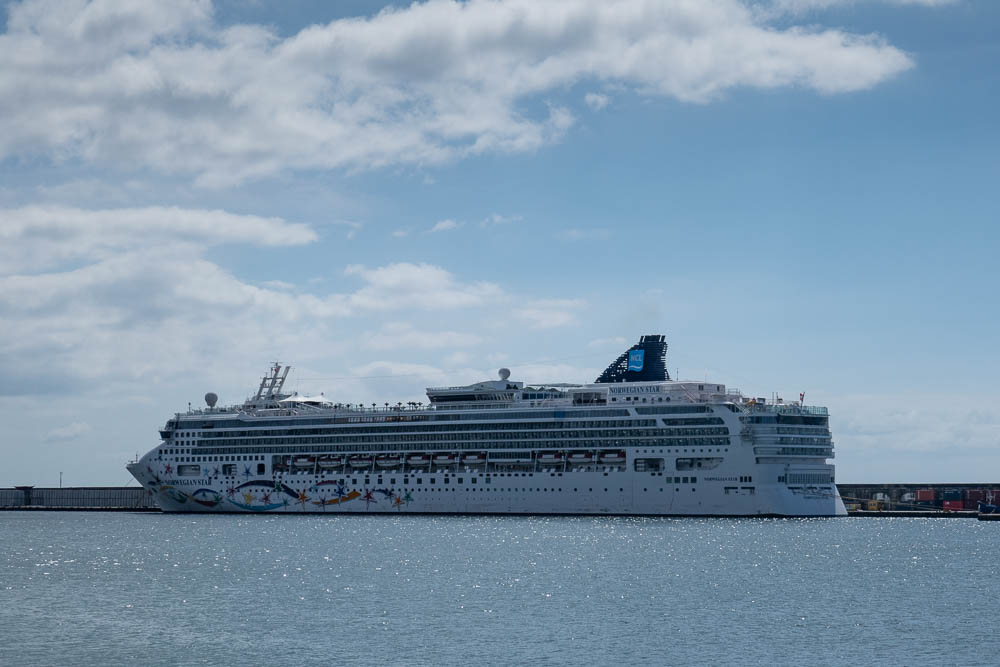
On the Upside
- Norwegian’s ships have a lot of extra cost specialty restaurants, and we were concerned that the food in the complementary restaurants would suffer; again we were pleasantly surprised. Although not gourmet, we had nice meals in each of the complementary restaurants: the two main dining rooms, the Irish pub, and the Asian restaurant. The buffet, however, was not up to the caliber of other lines on which we’ve sailed.
- The wine packages (which were not very well advertised) were a good deal. By buying four bottles from a reduced wine list, we were saving about 30-35% over buying individual bottles. As with other lines, if a bottle is not finished, we could take it with us or the restaurant would hold it for another night.
- The entertainment was quite good with a variety of different bands for different tastes. Ian thought the shows were a little campy but maybe he’s just getting crotchety.
- Both the bed and cabin bathroom were possibly the best we have seen on a cruise ship.
- Captain Matias’ daily announcements were great, a little navigation, with a little history sprinkled in, we found ourselves looking forward to these every day.
- We were concerned that six days at sea, followed by one port day, followed by two more sea days would get boring. Far from it, there was lots going on for those wanting to participate, otherwise an opportunity to truly relax (veg out?), get some reading done, without Internet.
On the Downside
- The embarkation was the worse we have ever seen, and we’ve sailed quite a few times before. It took us 2 ½ hours of standing in line from the time we arrived until we were finally on board the ship, even though we were assigned a half hour window in which to arrive. (We heard from some experienced Norwegian cruisers that we were in a departure terminal different from Norwegian’s usual one.)
- Disembarkation at the first two ports we visited was almost as bad, it took 1 ½ to get off of the ship. By the time we got to the third port, they seemed to have the process smoother and we got off without an issue. (Here again, we don’t know who was at fault, the cruise line or the port.)
- The Internet packages were the most expensive that we have seen and opted for unplugging for the duration of the cruise.
- The ship provided no maps or, in fact, any port information except for promoting shore excursions. Luckily free maps were available in every port except Malaga.
- Drinks seemed a little more expensive than other lines, $8.95-11.95 per drink plus 20% tip.
- The public restrooms needed a little work. (see refurbishment below).
- More than one little situation reminded us of Latin America, so we had quite a few giggles.
- The ship had the most restrictive policy we’ve seen yet on a cruise ship. No food or beverages could be brought back on the ship. We can possibly understand raw goods, but even processed food could be confiscated. No explanation was given for why.
The Norwegian Star, launched in 2001 and refurbished in 2010 and 2015, was scheduled to enter dry dock for about 2 ½ weeks immediately after our cruise ended. While the furnishings appeared to be in good shape, we thought some of public areas didn’t make a lot of sense anymore (such as a large Internet cafe). We also noticed some anomalies compared to other cruises.
-
It seemed that a lot of the crew acted ask if they were new at their jobs, so we wondered if the cruise line had placed a lot of new staff on board, using our cruise for training, knowing that the staff would get additional training while the ship was being refurbished.
-
All of the onboard stores were closed five days before the end of the cruise, presumably to do inventory and pack everything up before dry dock.
-
The ship started running out of various products over the course of the cruise, e.g., some cereals, certain beverages, coffee creamers, (one of our chosen wines!) etc., possibly in an effort to run down their stock before entering dry dock
Cost
Our cost for the cruise was $672 per person plus about $100 in taxes for an outside cabin. We could have saved about $150 per person by opting for a cabin without a window (a nonstarter for somewhat claustrophobic Ann). Our only other required expense was $14.50 per day per person in gratuities. Overall we thought this presented a good value since it included transportation, accommodations, and all the food we could eat (we ate too much) for 14 days.
Itinerary
14 days total, stopping at two ports in Portugal and three in Spain. We left from Miami and spent six days crossing the North Atlantic before arriving in Ponta Delgada in the Azores, followed by two more sea days, then Lisbon, Cadiz (close to Sevilla), sailing through the Straits of Gibraltar to Malaga (close to Granada), then Alicante, before arriving in Barcelona.
Ports of Call
Ponta Delgada, Azores, Portugal
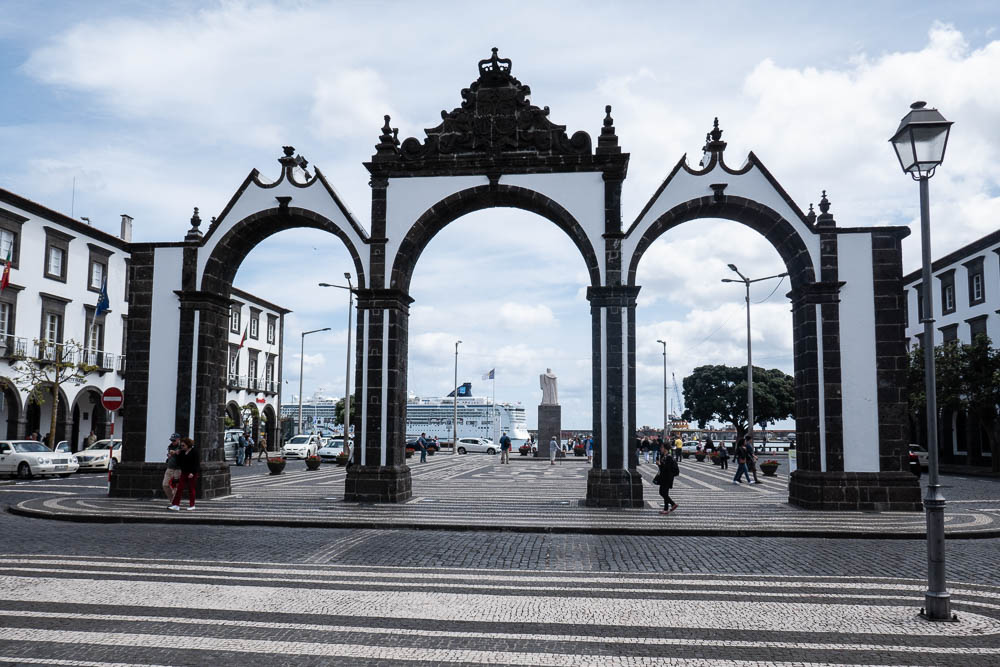
A very nice island with a scenic port and green hills. Exiting the ship, we knew immediately that we were in Europe and no longer in Latin America, and we enjoyed walking around the town.
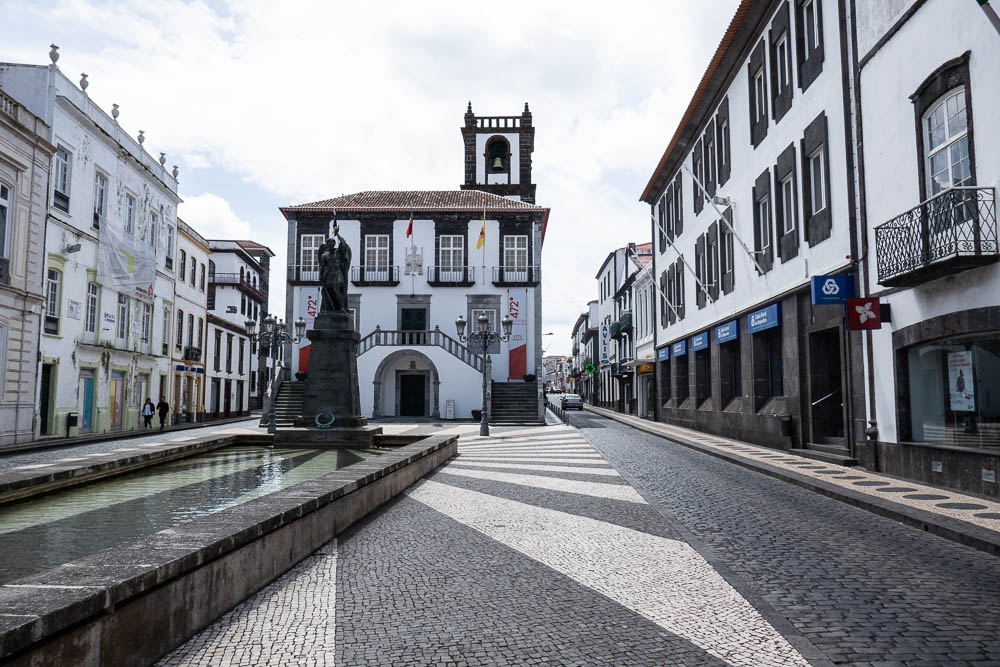
Since it was a Sunday, most stores were closed, which we thought was cool, compared to the Caribbean where everything is open while cruise ships are in port.
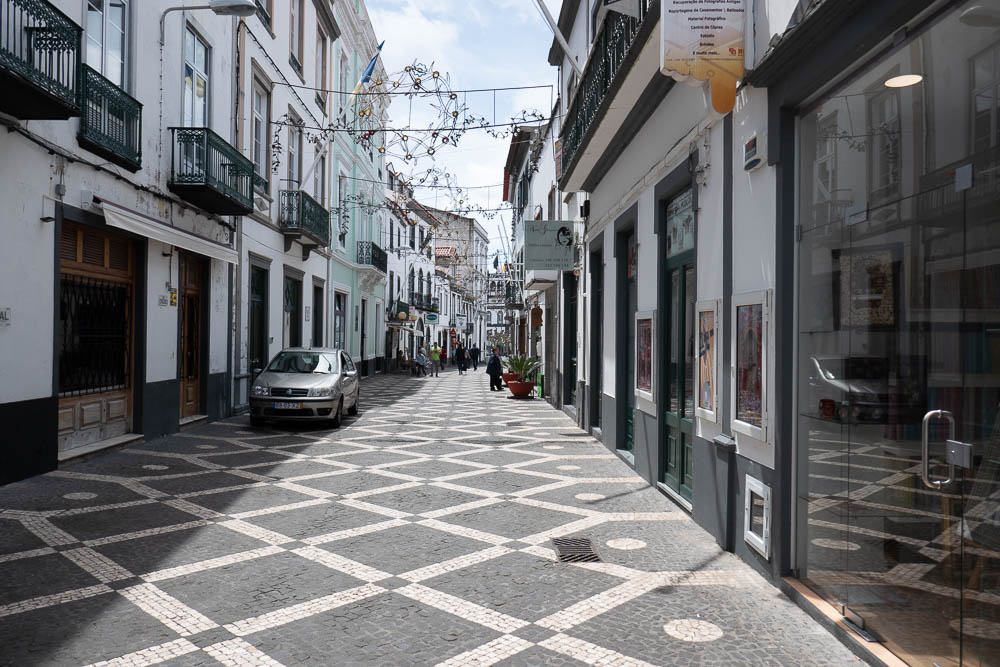
However, the climate was a little chilly for late April, and at two hours from Lisbon by air it’s a little remote, and the island does not have good beaches. On the plus side, it’s only four hours from the east coast of the US. It was peaceful and the prices seemed comparable to Lisbon, a rarity on islands which are usefully quite a bit more than the mainland. (Hawaii is a prime example of this, being considerably more expensive than California for everyday items, such as food.)

Lisbon
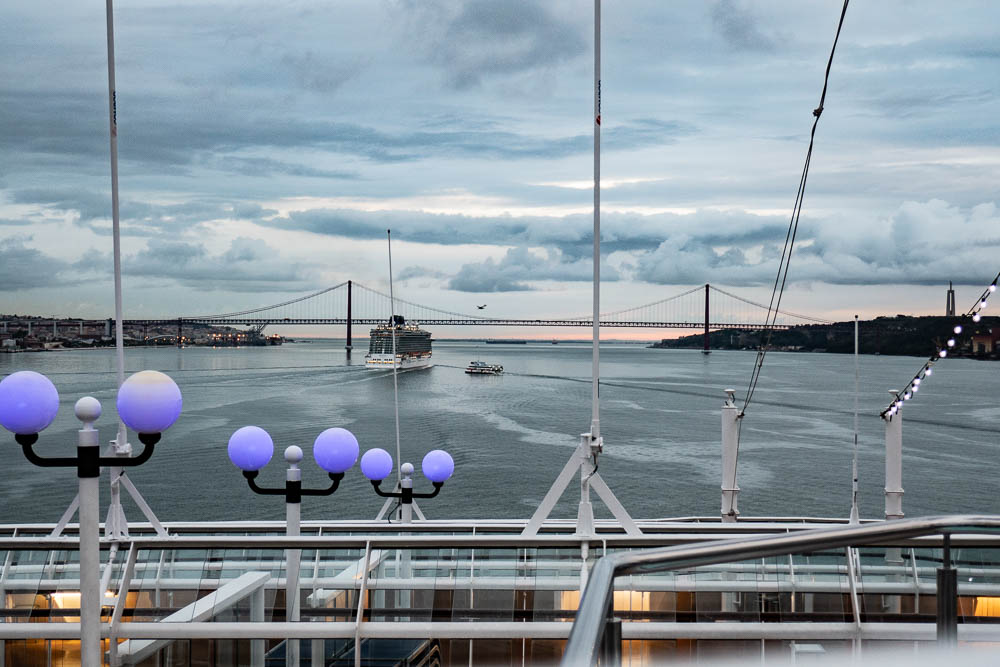
The cruise port is right downtown below the old Alfama district and is an easy walk to most central neighborhoods.
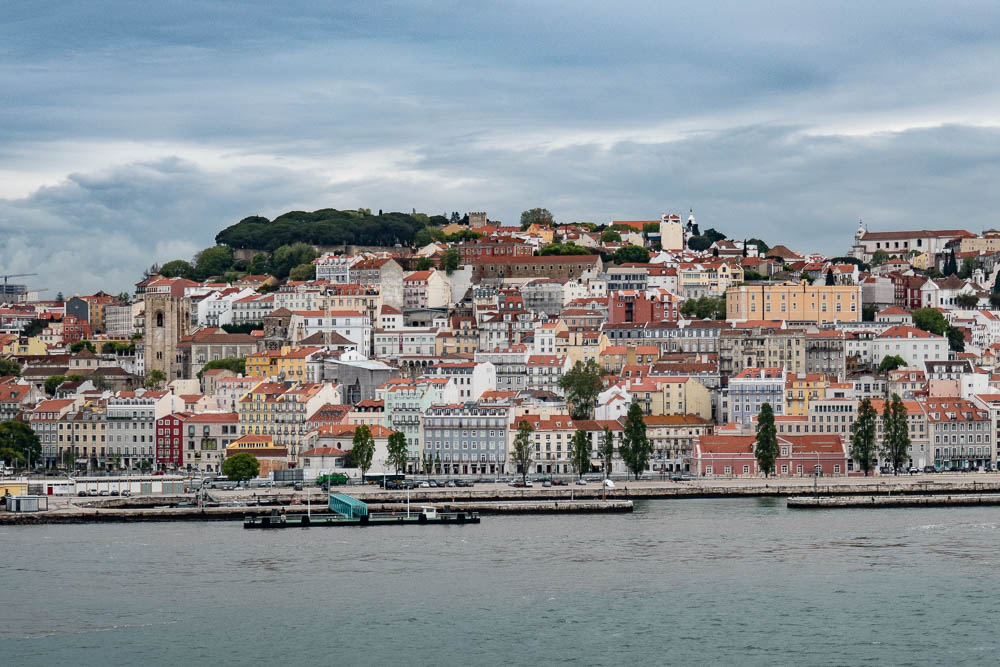
We had visited Lisbon in 2012 and since we had a short port stop, 10 am-2:30 pm, decided to just wander around town and visit some of our favorite places from our previous visit. We were pleased to realize how much we remembered; we even found our way relatively easily to our old apartment. Lisbon is a picturesque city in an elegant decay kind of way.
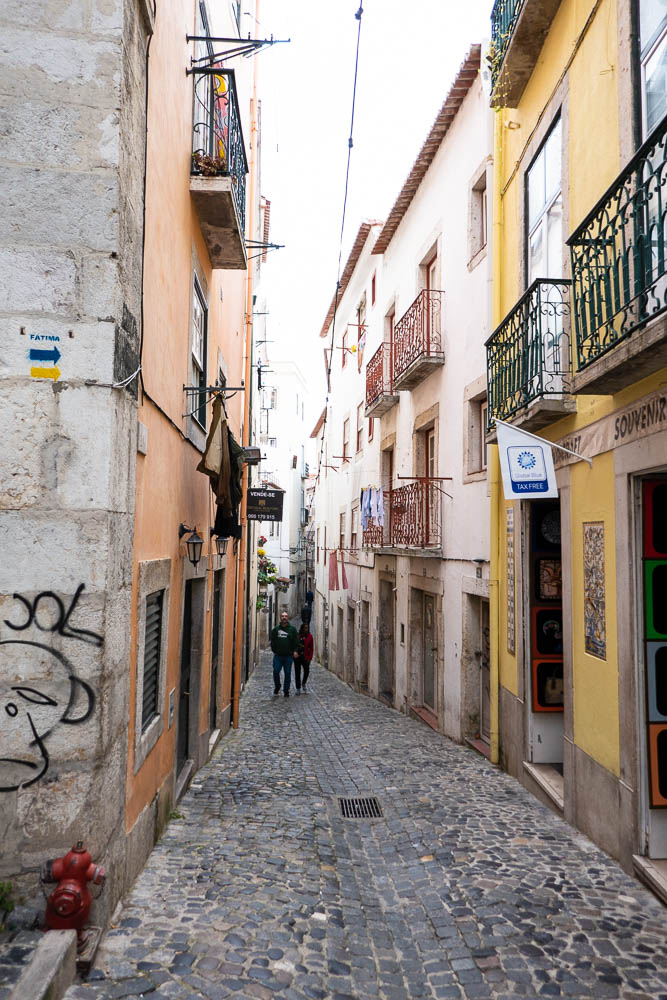
It was considerably more crowded than during on our last visit, very possibly because of the four large cruise ships in port. But we’ve noticed that Lisbon has been getting a lot of press coverage in the past few years, and investors have moved in, causing real estate prices to rise significantly.
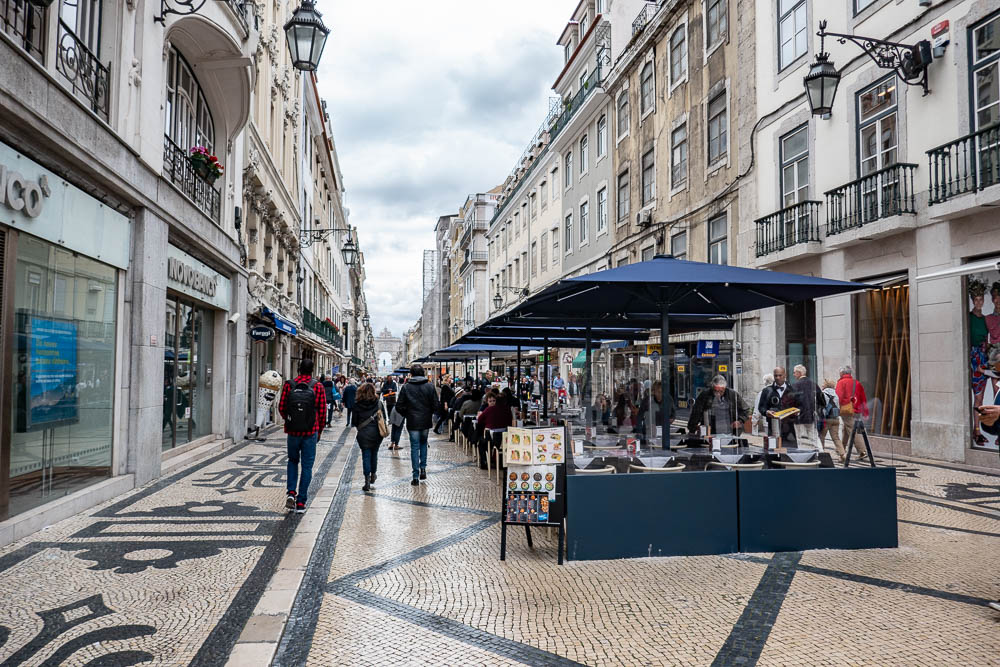
We also noticed more tour buses, plus tram tours, which we didn’t recall. As with many larger cities, Airbnb units have taken rental properties out of the long term market. We did make a quick stop into our old neighborhood grocery store and noted a few prices, quite reasonable. We also saw lunch specials in restaurant windows from €7.50. Overall good news to see that Portugal is still a reasonably priced destination.
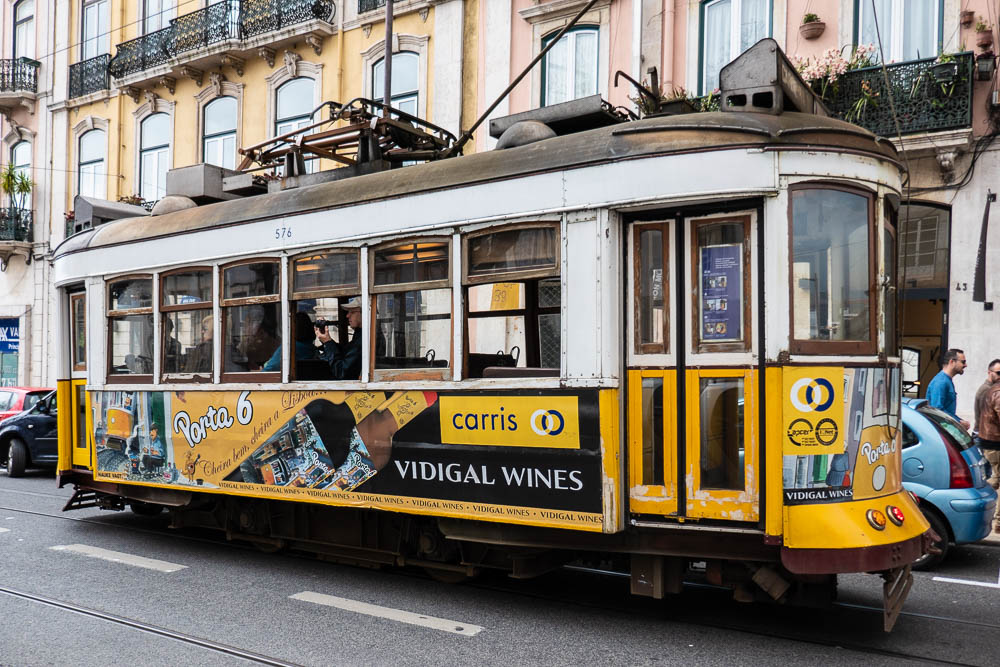
If we come back to Portugal after the cruise, it probably won’t be to Lisbon (or any of the other places we visited previously, although we liked them), but rather to a few towns we didn’t visit last time, so hopefully the prices will be even lower.
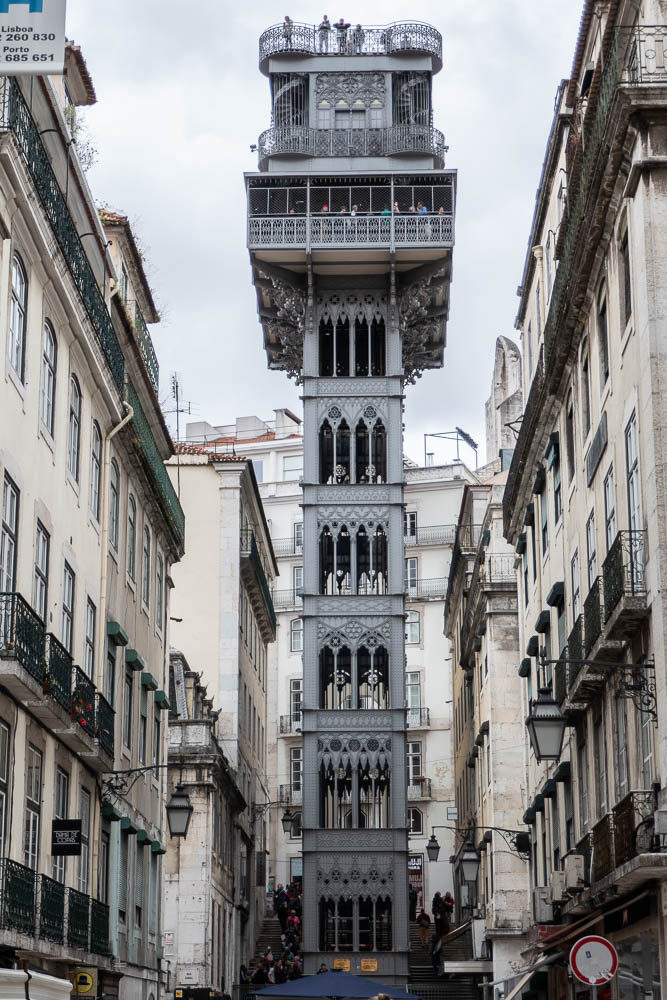
Cadiz
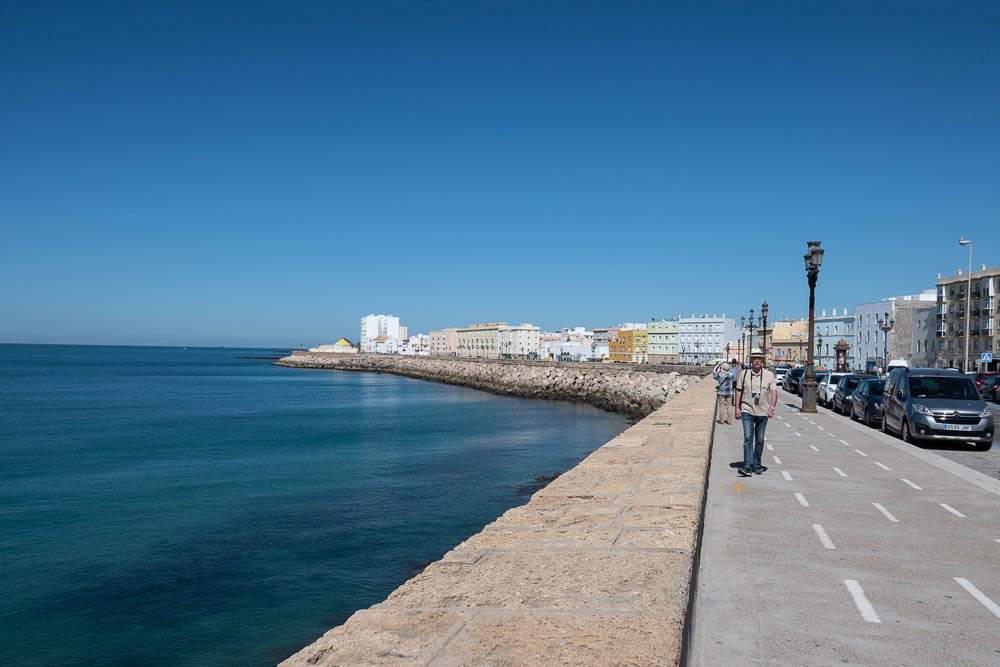
This port was the big surprise of the cruise. We had never heard of Cadiz, turns out it has a very picturesque old town with lots of history. Columbus sailed his second voyage from here, there are forts, castles, and other buildings from medieval times.
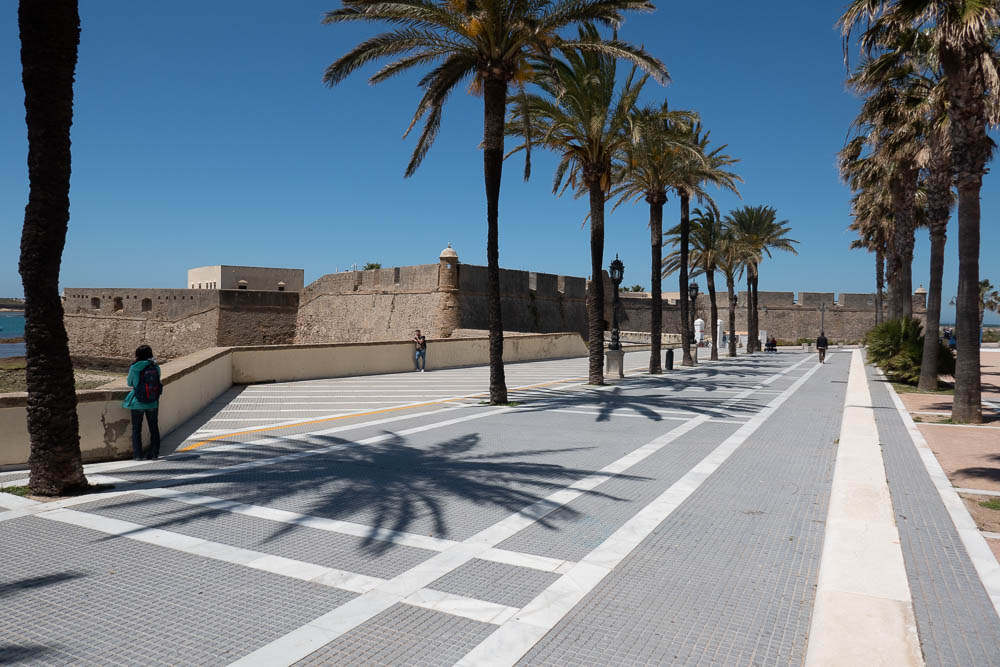
Most streets are more Renaissance looking.
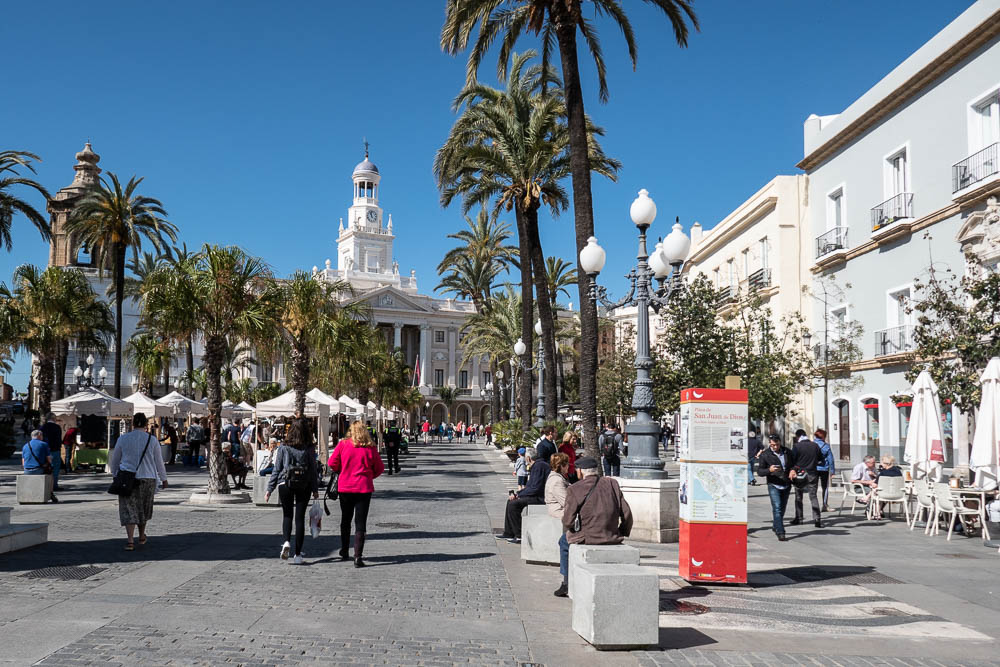
The beach in town has clear water, and much longer beaches could be seen on the outskirts of town. We were happy to hear Spanish again as we could understand some of what we were hearing, rather than Portuguese, where we didn’t have a clue.
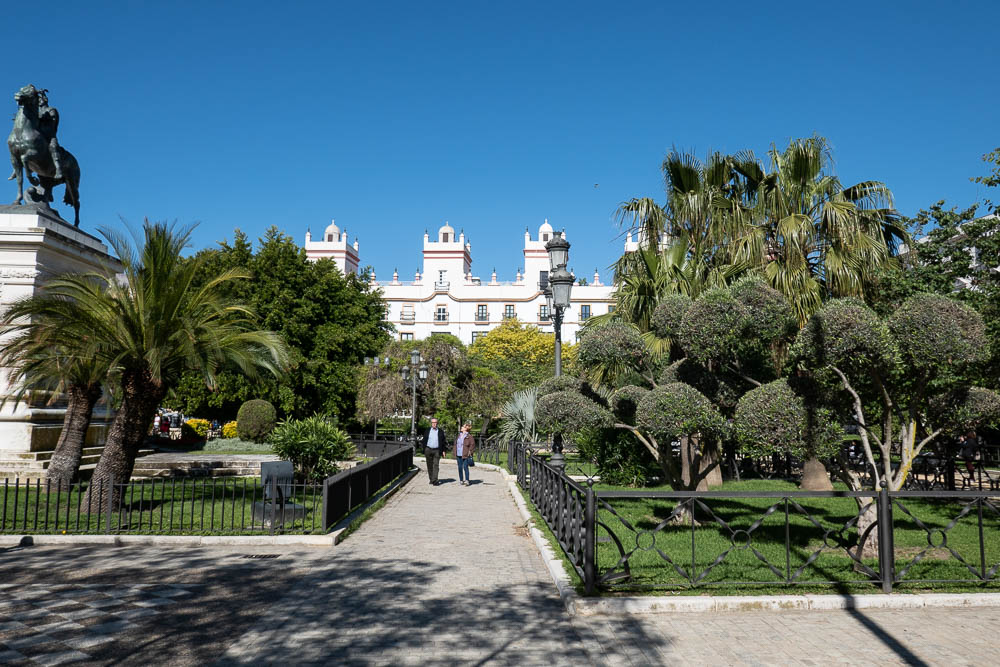
After spending about four hours walking around and wearing out our feet, we had a leisurely lunch and a few glasses of wine at €2.50 each (try finding that in the US). Following our lunch, we had a pleasant conversation with the owner of the restaurant…all in Spanish! He did mention that July and August are packed with tourists but the rest of the time not so many. Prices are slightly higher than Portugal, groceries were about 10% higher, restaurants were about €8.50-10 for a full lunch (remember: no need to tip in Spain). Cadiz is a town to which we might want to return for an extended visit. Ian did have an unfortunate incident, though. He partially fell off of a small wall and while not injured, his brand new camera wasn’t so lucky. So until he’s able to get it fixed or find a replacement, all we have is our phone cameras.
Malaga

Not our favorite port. While the town is pleasant and has a cathedral,

Roman theater and Moorish castle,

it was a too touristy, polished and upscale for our tastes, and prices at restaurant were more expensive than in Cadiz


After about four hours, we’d had enough and headed back to the ship
Alicante

Another pleasant town to spend a few hours wandering around (although after three straight days of walking 3-5 hours, our feet were letting us know that we were no longer 20 years old).

Alicante has a Moorish castle on the hill (not in as good a shape as the one at Malaga), and since most of the city was destroyed during shelling in 1609, the old town is quite small.
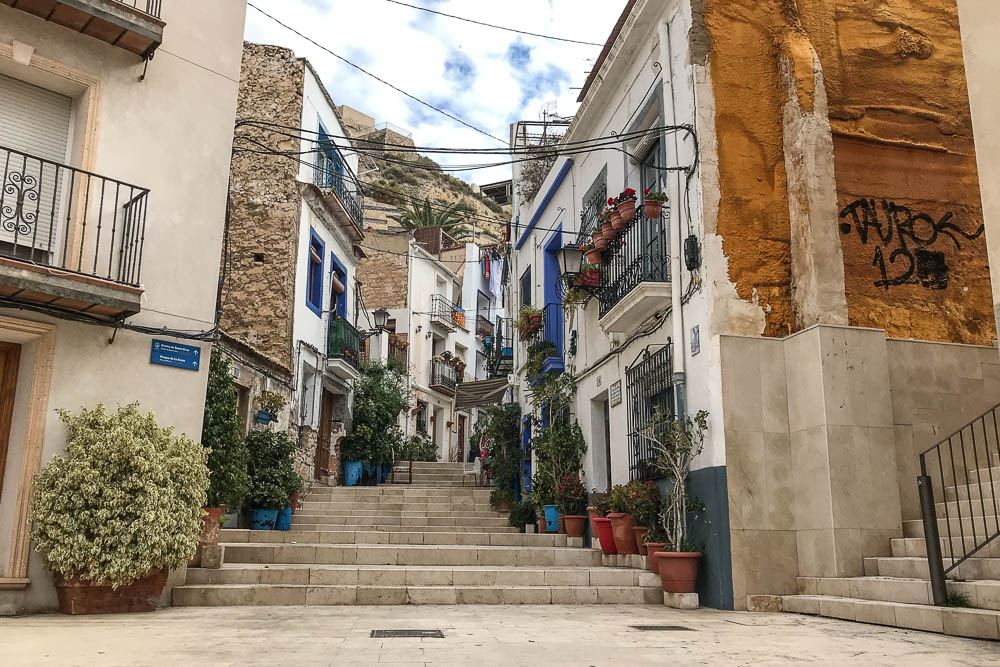
Encircling the old town are large swathes of apartment and condo towers. Prices seemed comparable to Cadiz. While we enjoyed Alicante, and the setting with hills spilling into the ocean is dramatic, it’s Cadiz that’s captured our imagination as a place to revisit.

Barcelona

Ian had been to Barcelona before in 1998, but this was Ann’s first visit. While Barcelona was expensive and crowded in 1998, it was nothing like now. We found out that Barcelona has now surpassed Rome as the third busiest destination in Europe, behind only London and Paris.

The Catalan independence movement was very much on display (much more so than in 1998) with lots of Catalan flags being displayed (along with specially designed Catalan independence flags) and the Catalan language being used. We spent two days here before heading to Valencia for a week. In those two days, we went through money like it was water, even through we’d effectively gotten the Crowne Plaza for $49 a night. Our inflated expenses were partially the result of the high prices in Barcelona, and since we didn’t have a kitchen were reduced to eating out three meals a day. Not to mention that we were cramming a week’s worth of tourist sights (at least at our preferred slower pace) into two days. We can definitively say that no way could we afford to travel in this manner long term. While on our walking tour, we met a couple in their 40’s who have been doing rapid travel like this for 14 months; their burn rate was considerably higher than ours, and we had to admire their energy. We did the following attractions and we thought all were well worth the time and money. Note: We didn’t need to print out tickets and were able to use the tickets on our phones for entrance.
- Two day Metro pass for €15 each, so much better than having to deal with buying individual tickets and we got our money’s worth (although we did learn that Ann is a bit challenged putting Metro tickets in the slots – details upon request). We thought about doing the hop on hop off bus but at €40 each and considering that it was raining our first day, the Metro worked out to be the better option for us.
- Free walking tour of the Gothic Quarter, 2 ½ hours, tip €10 each (since this was our first free walking tour, we didn’t know how much to tip, so followed Rick Steves’ guideline). Well worth it, our personable guide, John from New Zealand, was very knowledgeable about Barcelona. We got quite a dose of Catalan history that filled in a lot of the gaps regarding their independence movement. Note: For those interested, the cathedral is free before 12:30 pm and after 5:30 pm.

- Three Guadi buildings in the Eixample neighborhood. We just viewed these from the outside since we didn’t consider their over €20 each admission a good value. And yes, the lines were long.


- Park Guell – a Gaudi fantasy land. Now we know where Dr. Seuss got his inspiration. Very crowded (thankfully, the number of visitors is limited for each entry time), but well worth the 30 minutes or so we spent inside the garden and monument area at €7.50 each; we didn’t opt for the guided tour and didn’t feel it was necessary. Book online to avoid the ticket line. Some of the park entrances are under construction, the park’s website sent us to the wrong entrance, which caused a lot of extra uphill walking (not normally a big deal but our tired feet thought otherwise). At 1 pm we were able to book a 6:30 pm entrance for the same day, using our phone.


- Sagrada Familia – The number one sight in Barcelona and the most crowded, but even with the crowds, it was well worth the €21 entrance fee each, which included a guided tour. Definitely opt for the guided tour, the extra cost wasn’t much and our guide pointed out things that we never would have known. We really came to appreciate Gaudi’s creativity, offbeat personality, and architectural skills. Interesting side note: When Gaudi designed the church, construction techniques were not good enough to finish it; in fact, in wasn’t until 2014 that someone figured out how to build the largest tower. To date, 8 of the total 18 towers in the design have been built. The goal is to be finished with the main construction by 2026 (the final ornamentation is expected to take much longer), the centennial of Gaudi’s death. Ian had visited in 1998 and he couldn’t believe how much it has changed. Make sure to advance book on the Internet to avoid the ticket line. We booked ours two weeks ahead of time (probably not necessary that far in advance but since we only had two days in Barcelona, we wanted to be sure).



Next Up: Reflections on six months of travel in Latin America
Ian & Ann

15 Comments
So glad to hear from you guys. I was just going to send an email to find out when your next blog and tree would be. And then your blog entry appeared! Glad you’re both well. Ian, stay off walls and stick to sidewalks. Let me know when you plan to tour Portugal. Love to you both. Love, ira
Hi Ira,
So our timing was just perfect. Point taken regarding walls and sidewalks. Still not sure about our plans regarding Portugal.
Ian & Ann
Interesting, lengthy, historical facts,and most enjoyable report. Ann, you look terrific. Appreciate the time and effort you both put in to send this blog. Love, Mom
Hi Mom,
Thanks for your encouragement. When I told Ian that we didn’t need to include that picture of me, he said we needed to have it in there just for you.
Love, Ann
Wonderful write-up! We to follow you lead with the leisurely trip across the Atlantic and the taste of the Iberian peninsula.
Ann … rest assured … you are not alone with being challenged with proper Metro ticket insertion techniques….
Fabulous BLOG listings, wish we could be with you !!
Hi Joan,
We feel confident that we will hook up again to enjoy some yet to be determined location together.
Ian & Ann
My text disappeared, so I’ll rewrite:
Excellent writeup and pictures – almost like being there Art
Hi Art,
What, taking a break from Spanish? Glad the photos let your imagination take you to all these wonderful places.
Ian & Ann
So glad to finally hear from you two again! What a beautifully written itinerary once again. I so enjoy reading about your travels. Enjoy!
Hi Carrie,
A bit of whirlwind travel along with spending time with family while back in the states for just 3 1/2 weeks, plus 2 weeks on the cruise without Internet…okay, enough excuses. You can look forward to our posts arriving more regularly again.
Ian & Ann
Thanks for your comments on the Star, since we will be on it in 2 months, I appreciate your input. Love hearing about your European adventures! I keep picturing Ian as Humpty Dumpty, glad you weren’t hurt, but I have to hear about that one when we next see you.
Enjoy!
Hi Yvette,
Would love to compare notes on the Star before and after dry dock. And sorry to disappoint, but it was only a small wall, not even worth mentioning if it wasn’t for the camera. Ian felt like he was in a Monty Python skit.
Ian & Ann
Beautiful photos! Seeing the ones from Barcelona bring back fond memories. I loved the Gaudi architecture when I was there.
Ellie
Hi Ellie,
We’re happy to bring back fond memories for you. We too were a bit amazed by Gaudi’s work and learned a lot of detail about him on the guided tour of Sagrada Familia.
Ian & Ann